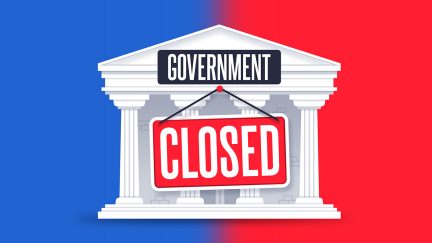Never miss a story — sign up for PLANADVISER newsletters to keep up on the latest retirement plan adviser news.
Senate Tax Reform Success Sets Up High Stakes Conference Committee Process
With the passage of the Senate’s version of tax reform, the stage is set for a bicameral conference committee process through which a select group of legislators will try to rectify the House and Senate bill texts.
At nearly 2 a.m. on Saturday morning, the GOP leadership in the U.S. Senate called for a vote on the Tax Cuts and Jobs Act; with another version previously passed by the U.S. House of Representatives, the success of the proposal in the Senate pushes the tax reform effort into the crucial conference committee phase.
Washington watchers will be familiar with the mechanics of a conference committee: A select group of highly placed legislators will meet in the coming weeks to try to combine and otherwise edit the House and Senate bill texts into a single common form. Should House and Senate GOP leaders successfully craft a joint version of the Tax Cuts and Jobs Act that meets their respective demands, the full House and Senate will then be given the chance to vote on the final bill, which could subsequently be submitted for the president’s signature.
At this stage, it still somewhat difficult to predict the final form any new tax laws could take, experts agree. In fact, many of them are still digesting the hundreds of pages of legislative text comprising the dueling proposals, and they remain wary of making strong predictions given the real potential for substantial amendments.
A few things seem clear so far, including that retirement plans are largely left alone by both bills. By way of background, both the preliminary versions of the House and Senate proposals would have made major changes to the treatment of deferred compensation for executives and highly paid employees. However, following the earliest stages of debate, both the House and the Senate backed away from the proposed changes to deferred compensation arrangements, as well as from other retirement-industry focused proposals. For example, the initial House and Senate bills both were amended to strike new limitations of catch-up contributions for high-wage employees, and to eliminate a proposal to implement a 10% penalty tax for early withdrawals made prior to age 59½ from governmental section 457(b) plans.
Given that many retirement plan sponsors are also business owners, the industry will be closely watching how the conference committee treats “pass through taxes.” Speaking broadly, under current law such income is taxed at the regular personal income tax rate per the amount of income drawn in a given year. As laid out in some early comparative analysis shared by the Heritage Foundation, the House bill as passed caps the maximum tax rate for pass-through income at 25%, “subject to special rules that effectively raise the tax rate.” On the Senate side, deductions are “allowed for 23% of qualifying pass-through income, but no other preferential rate is set.” Where the common ground may be on this issue and others, again, remains to be seen.
Offering some preliminary commentary on the forthcoming conference process, which Congressional leaders hope to wrap and deliver to taxpayers by Christmas, David Musto, president of independent retirement and college savings services provider Ascensus, says he seems some positive and negative aspects for the retirement plan industry and its clients.
“It is important to acknowledge the many unknowns remaining in this process,” he observes. “While both versions of the bill tout tax cuts, the question remains, will more disposable income lead to more savings across the board?”
Musto feels both the House and Senate bills respect the importance of tax-advantaged retirement plans to the wealth generation of average Americans.
“While both bills have some provisions seeking to simplify use of retirement plans, greater access to plan assets via hardship distributions and broadened options for in-service withdrawals may increase the use of assets for non-retirement purposes,” he warns.
Being in the business of servicing 529 plans, Musto is naturally encouraged by provisions included in the Senate bill to promote tax-advantaged college savings to meet elementary and secondary school tuition. Also included in the Senate bill is the ability to roll 529 assets into ABLE programs for disabled savers.
Among his concerns is the Senate’s choice versus the House to eliminate the Affordable Care Act’s so-called individual health insurance mandate via tax reform. This could place a larger financial burden on consumers without health coverage, he fears.
You Might Also Like:

Could Government Shutdown Delay Retirement Plan Limit Updates?

Health-Related Spending Account Contribution Limits to Rise in 2026



